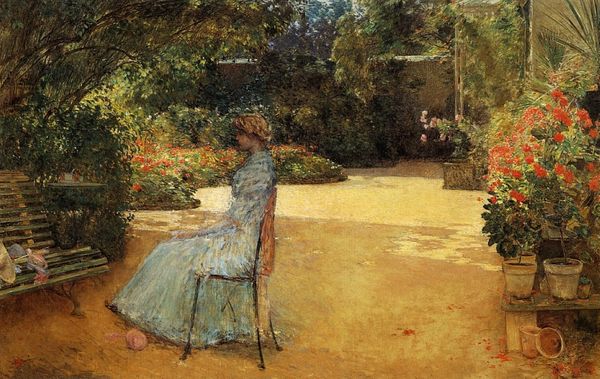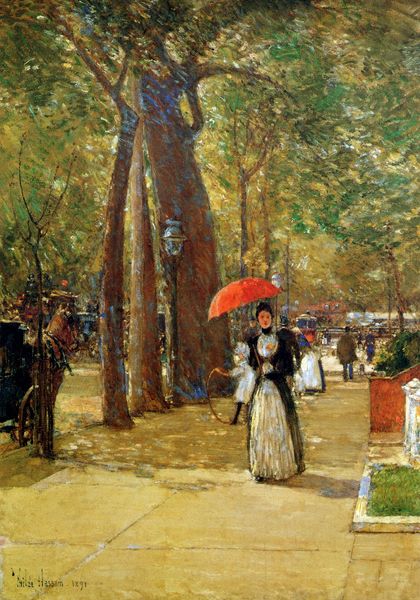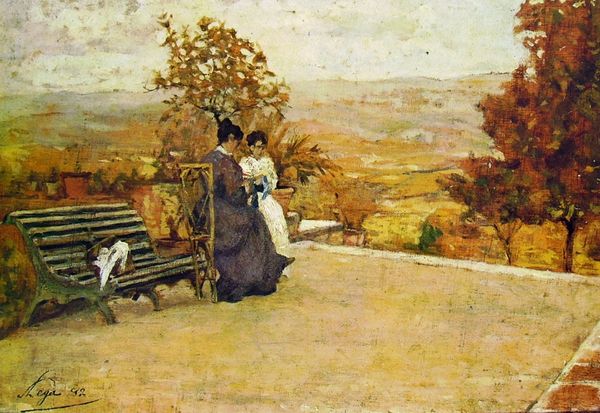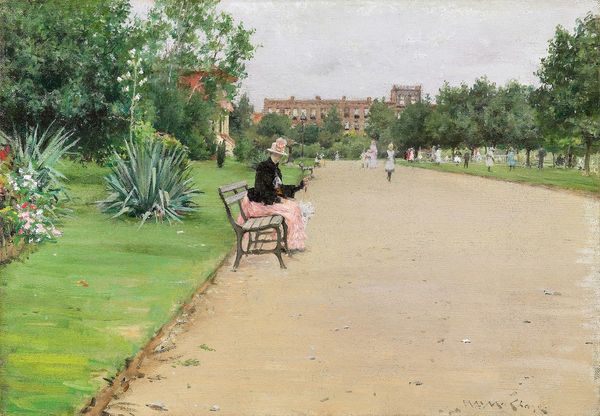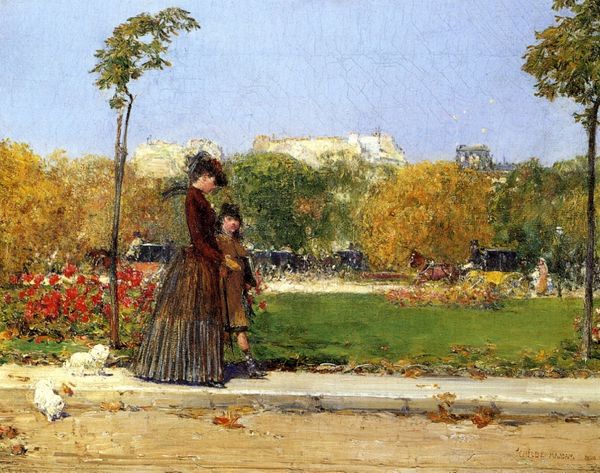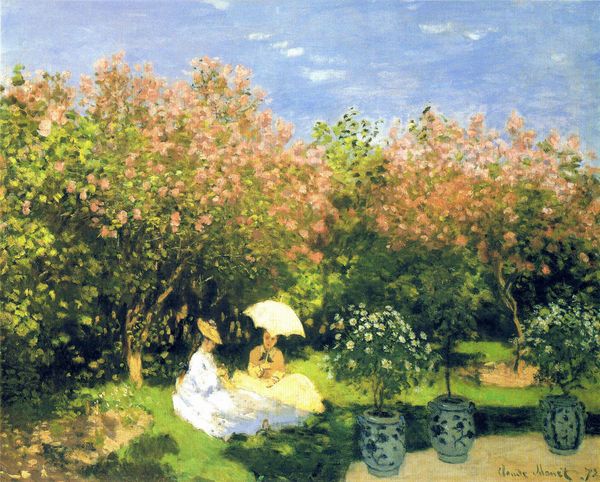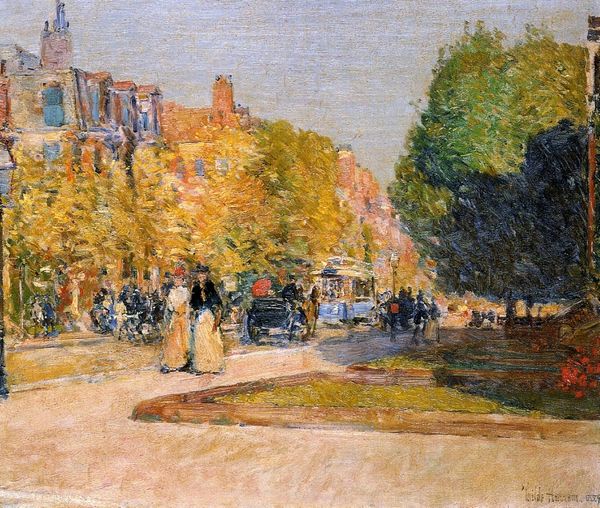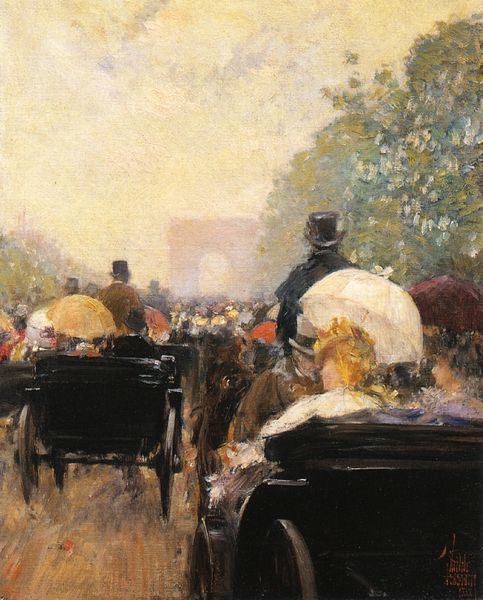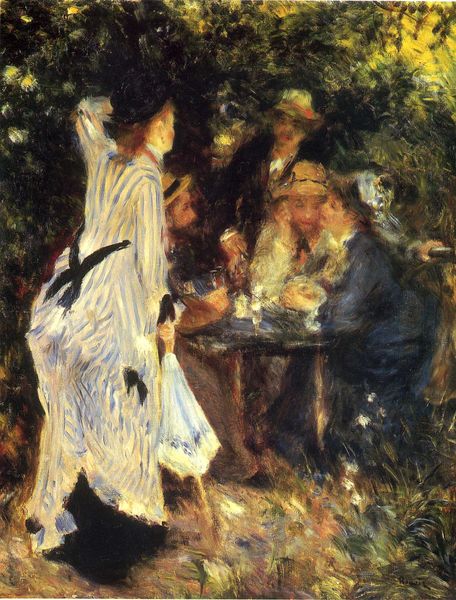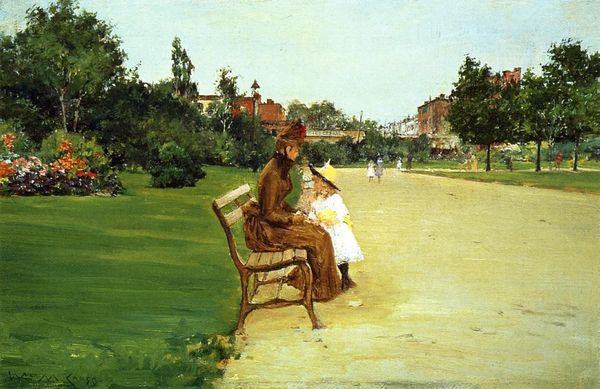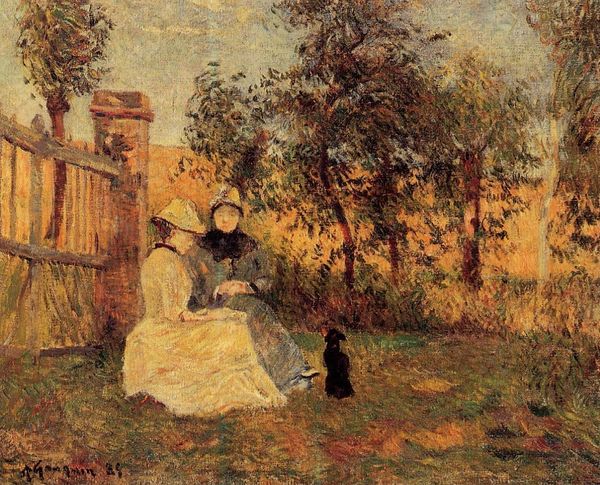
painting, plein-air, oil-paint
#
portrait
#
painting
#
impressionism
#
plein-air
#
oil-paint
#
oil painting
#
cityscape
#
genre-painting
#
street
#
building
Copyright: Public domain
Curator: The bustling scene captured in Childe Hassam's "At the Café," painted in 1889, provides us with a fascinating glimpse into Parisian life during the Impressionist era. Editor: My initial reaction is to the light. Note how Hassam contrasts the darker figures in the foreground against the vibrant streetscape in the distance. It's a masterful manipulation of depth and light, all conveyed with relatively loose brushstrokes. Curator: It's remarkable how Hassam uses those very brushstrokes to depict a social stratification, isn't it? Consider the attire and postures of the café patrons—indicators of a certain bourgeois leisure, a societal position of privilege afforded through economic advantage. Editor: True, but observe how the composition itself reinforces that social dynamic. The linear perspective draws our eyes towards the upper class at leisure in the café, literally foregrounding the scene, while the street is a mere atmospheric setting behind. It’s almost like staging for a play. Curator: Precisely! And let's consider the act of observation depicted within the painting. The figures are both observing and being observed, revealing an implicit understanding of social codes within urban spaces. Are they passive recipients of the urban experience, or active agents shaping their environment? Editor: Semiotically, a lot of the signals work. Consider how the artist plays with muted tones for secondary figures. They don't take away the meaning, but they take away from the clarity of vision—drawing focus in stages across the frame. Curator: That kind of ambiguity is crucial. It acknowledges the multiple narratives coexisting within the same physical space. Are these simply scenes of recreation or an attempt to explore an emerging and transforming cultural fabric in nineteenth-century France? Editor: Regardless of our socio-historical inquiries, Hassam's skillful execution of the tenets of Impressionism stands out. Notice his play with color and light, translating them onto the canvas, building that incredible surface in an almost pointillist manner to depict a moment in time. It captures what it *feels* like to be at a café in Paris. Curator: Yes. And understanding what it *meant* to be at a cafe can only amplify this experience. We might start to consider not just light, color, or texture, but issues of representation, class and gender performance during a period of massive social change. Editor: Whether analyzing the pictorial qualities of the piece, or the historic ones, I walk away with a greater sense of beauty than when I started. Curator: Likewise, it makes one consider how that pursuit of leisure shapes cultural memory and identity.
Comments
No comments
Be the first to comment and join the conversation on the ultimate creative platform.
